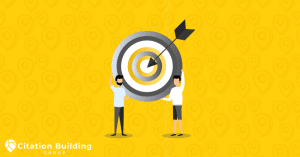Is your website fast enough to keep visitors from bouncing away?
In today’s competitive digital landscape, even a one-second delay can cost you sales, visibility, and trust. That’s where Core Web Vitals come in Google’s essential ranking signals that measure how users truly experience your site.
By improving your Core Web Vitals, you’re not just boosting technical metrics — you’re creating smoother, faster, and more engaging experiences that drive conversions and customer loyalty.
At Citation Building Group, we specialize in optimizing performance from the ground up — ensuring your site loads quickly, performs flawlessly, and meets every key metric Google cares about.
👉 Take the first step toward higher rankings and better user experiences — let’s optimize your Core Web Vitals today.
What are Core Web V Vitals and why are they important for SEO?
Core Web Vitals are a subset of web vitals that apply to all web pages, should be measured by all site owners, and represent distinct facets of the user experience. They are extremely important for SEO because Google has officially included them as a ranking factor. This means that sites that provide a better user experience, as measured by these vitals, have a greater chance of ranking higher in search results. This makes optimizing Core Web Vitals a direct investment in your digital visibility.
Explaining the three core metrics in detail: LCP, INP, and CLS
Core Web Vitals currently consist of three core metrics, each focusing on a different aspect of the user experience:
- LCP (Largest Contentful Paint): This metric measures loading performance. Specifically, it marks the point in the page load timeline when the page’s main content has likely loaded.
- INP (Interaction to Next Paint): This metric measures responsiveness. It calculates the time between a user interaction (like a button click) and the page’s visual response to that interaction.
- CLS (Cumulative Layout Shift): This metric measures visual stability. It tracks any unexpected layout shifts on the page as it loads.
Official standards: what does Google consider a “good” score?
To effectively optimize your Core Web Vitals, you need to know the targets set by Google. To get a “good” score, you should aim for the following:
- LCP should be 2.5 seconds or less.
- INP should be less than 200 milliseconds.
- CLS should be less than 0.1.
The best tools for measuring your site’s Core Web Vitals
Fortunately, Google and other sources provide many tools to help you measure Core Web Vitals and identify problems:
- Google Search Console: Provides a dedicated Core Web Vitals report that shows your entire site’s performance based on real user data.
- PageSpeed Insights: This tool gives you a detailed report on the performance of a specific page, along with practical suggestions for improvement.
- Chrome DevTools: Allows you to measure the vitals directly in your browser while developing and modifying the site.
The shift from FID to INP: what you need to know
In March 2024, Google officially updated the Core Web Vitals metrics, replacing the FID (First Input Delay) metric with the new INP (Interaction to Next Paint) metric. This change is important because INP is a more comprehensive measure of responsiveness. It not only measures the delay in the first response but takes into account all user interactions throughout their visit to the page, making it a better indicator of the overall user experience.
Do you realize that outstanding technical performance must be supported by a strong external SEO foundation? Let the citation building group team handle the task of building accurate citations, giving your fast and stable site the trust it needs to rank.

Practical strategies for improving LCP (Largest Contentful Paint)
To improve LCP, you must focus on speeding up the loading of the largest element on your page. These fundamental On-Page SEO tactics include optimizing and compressing images and using Content Delivery Networks (CDNs) to reduce the distance between the server and the user, reducing server response time, and deferring the loading of render-blocking CSS and JavaScript files. Every fraction of a second matters in improving this important Core Web Vitals score.
How to improve INP (Interaction to Next Paint)
Improving INP revolves around reducing the amount of work the browser does after a user interaction. This can be achieved by breaking up long tasks in JavaScript into smaller parts, avoiding the use of unnecessary scripts, and using techniques like web workers to run processes in the background. The goal is to ensure the page can visually respond to user clicks and scrolls quickly. This is the essence of optimizing this crucial Core Web Vitals metric.
How to fix CLS (Cumulative Layout Shift)
Fixing CLS (Cumulative Layout Shift) is essential to providing a visually stable and enjoyable experience for your users. Unexpected layout shifts often happen when images, ads, or iframes load without defined dimensions — causing the page to jump around.
To fix this, always set width and height attributes for all media elements, reserve space for dynamic content, and avoid placing new elements above existing ones. Using developer tools can help you quickly identify which elements are triggering shifts.
A stable layout doesn’t just make your site look better — it strengthens your Core Web Vitals, which directly impact your SEO performance and user trust.
At Citation Building Group, we go beyond surface fixes. Our team ensures your digital foundation — from business listings management to Local SEO Service and Citation Building Services — is solid, fast, and reliable.
👉 If you’re ready to stop losing customers due to slow or unstable pages, contact Citation Building Group today and let us help you create a stronger, more consistent web experience that boosts your Core Web Vitals and drives lasting growth.
FAQs
Do Core Web Vitals affect all types of websites?
Yes. Core Web Vitals are a Google initiative designed to improve user experience across all websites, no matter their size or industry. These metrics apply to every site and directly impact your rankings. To stay competitive, it’s smart to combine your performance optimization with expert SEO services and Local SEO Service providers who can help improve both technical speed and visibility through reliable Citation Building Services.
What is the most important free tool to start measuring Core Web V-itals?
The best free tool to measure Core Web Vitals is Google PageSpeed Insights. It gives you real user data (field data) and lab data, along with clear recommendations. For businesses looking to strengthen their overall web performance, pairing these insights with business listings management and Directory Submission Services ensures that your website’s speed and credibility work hand in hand.
Can I ignore Core Web Vitals if my content is of high quality?
No. While high-quality content is essential, Google now prioritizes both content value and page experience. Sites with stronger Core Web Vitals typically outperform competitors with equal-quality content. To maximize your results, maintain a strong technical foundation through Local Citation Management, regular citation cleanup service, and a Free Citation Audit — all of which enhance your SEO structure and user trust.

















